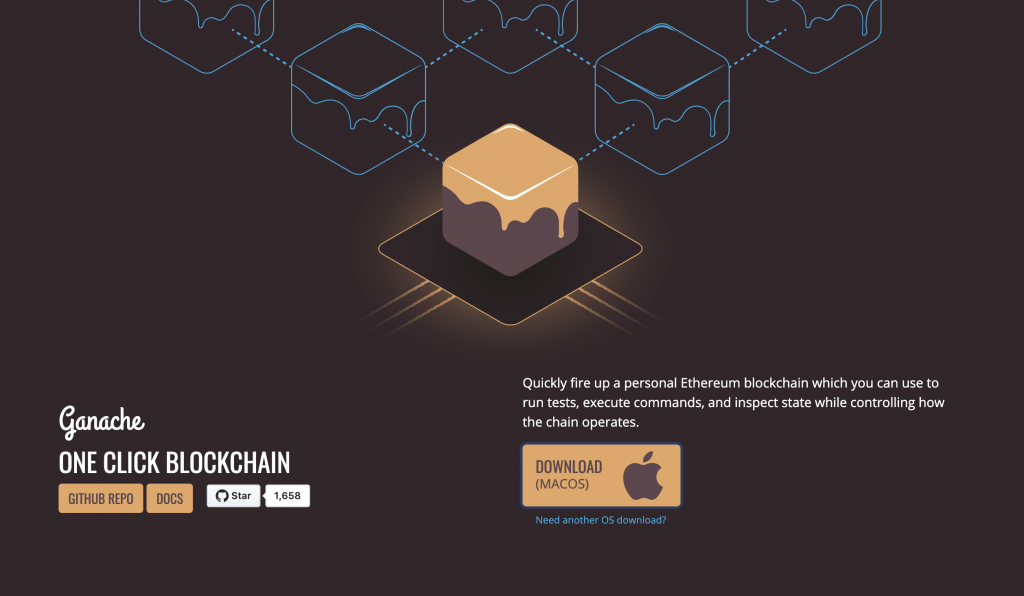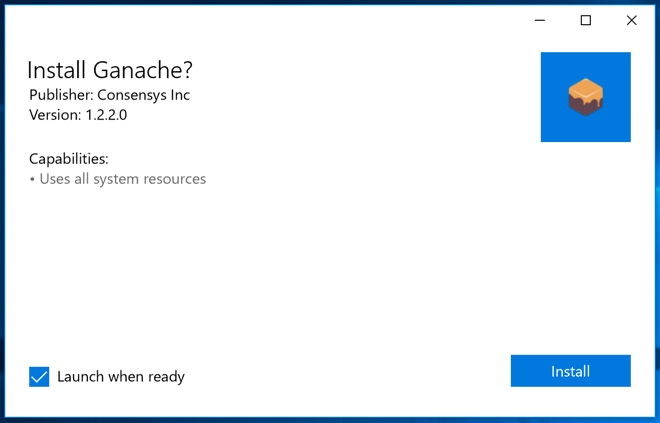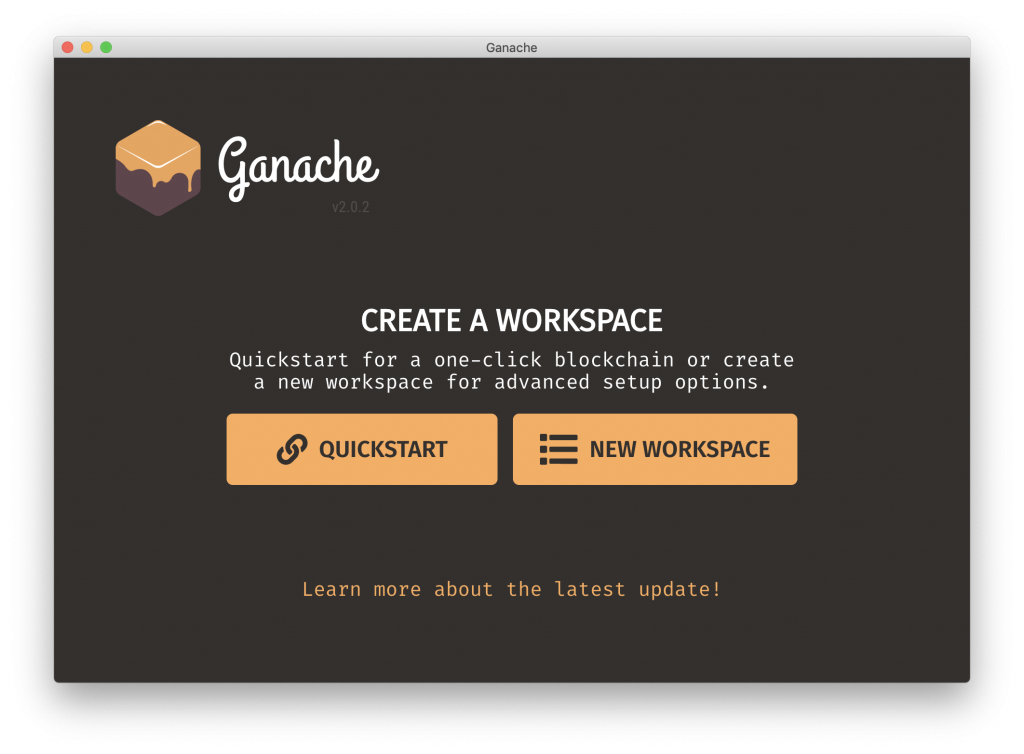
ในการเรียนรู้เขียนแอพพลิเคชั่นเชื่มต่อกับระบบ Blockchain ของ Ethereum เราจะมีการติดตั้งโปรแกรมตามรายการด้านล่างครับ
Blockchain for Developer เป็นคอร์สที่ปัจจุบัน มีบริการแบบจัดอบรม in-house สนใจโทรติดต่อ 083-071-3373 ได้นะครับ
สำหรับคนใช้ MacOS
สำหรับคนที่ใช้ MacOS ให้เข้าไปดูที่นี่แทนได้เลย
เครื่องคอมพิวเตอร์ที่จะใช้ในการอบรม
- Windows 10 เวอร์ชั่นอัพเดตล่าสุด
- แรมอย่างน้อย 8 GB
1. ติดตั้ง Ganache

- ดาวน์โหลดตัวติดตั้งสำหรับ Windows จากลิ้งค์นี้ https://truffleframework.com/ganache
- ดับเบิ้ลคลิก และทำการติดตั้งให้เรียบร้อย (การติดตั้งจะมีการดาวน์โหลดไฟล์เพิ่มเติมจากอินเตอร์เน็ตด้วย)

เสร็จแล้ว ให้ลองเปิดโปรแกรม Ganache ขึ้นมาจะเห็นหน้าตาแบบนี้ครับ

2. ติดตั้ง Node.js
- ดาวน์โหลดตัวติดตั้ง NodeJS รุ่น LTS เท่านั้นจาก https://nodejs.org/en/download/
- ติดตั้งตามขั้นตอนในวิดีโอนี้เลยครับ
3. ติดตั้ง Truffle & Ganache CLI
- เปิดโปรแกรม Command Prompt หรือ Powershell
- รันคำสั่ง
npm install -g truffle - รันคำสั่ง
npm install -g ganache-cli
4. ติดตั้ง Visual Studio Code
- ดาวน์โหลดตัวติดตั้งมาจาก https://code.visualstudio.com/download
- ทำการติดตั้งโปรแกรมให้เรียบร้อย
- เปิดโปรแกรม Visual Studio Code
- คลิกเปิดส่วน Extension ทางด้านขวา
- ค้นหา ติดตั้ง Extension ชื่อ Nextflow Blockchain Dev Pack
5. Git client
- ดาวน์โหลดตัวติดตั้ง Git client มาจาก https://git-scm.com/downloads
- ทำการติดตั้งทีละขั้นตอน ให้ตรงกับในวิดีโอ
จากนั้นก็ลองเปิดโปรแกรม Powershell หรือ Command Prompt ขึ้นมา และรันคำสั่ง
gitควรเห็นข้อความประมาณนี้ครับ
usage: git [--version] [--help] [-C <path>] [-c <name>=<value>]
[--exec-path[=<path>]] [--html-path] [--man-path] [--info-path]
[-p | --paginate | -P | --no-pager] [--no-replace-objects] [--bare]
[--git-dir=<path>] [--work-tree=<path>] [--namespace=<name>]
<command> [<args>]
These are common Git commands used in various situations:
start a working area (see also: git help tutorial)
clone Clone a repository into a new directory
init Create an empty Git repository or reinitialize an existing one
work on the current change (see also: git help everyday)
add Add file contents to the index
mv Move or rename a file, a directory, or a symlink
reset Reset current HEAD to the specified state
rm Remove files from the working tree and from the index
examine the history and state (see also: git help revisions)
bisect Use binary search to find the commit that introduced a bug
grep Print lines matching a pattern
log Show commit logs
show Show various types of objects
status Show the working tree status
grow, mark and tweak your common history
branch List, create, or delete branches
checkout Switch branches or restore working tree files
commit Record changes to the repository
diff Show changes between commits, commit and working tree, etc
merge Join two or more development histories together
rebase Reapply commits on top of another base tip
tag Create, list, delete or verify a tag object signed with GPG
collaborate (see also: git help workflows)
fetch Download objects and refs from another repository
pull Fetch from and integrate with another repository or a local branch
push Update remote refs along with associated objects
'git help -a' and 'git help -g' list available subcommands and some
concept guides. See 'git help <command>' or 'git help <concept>'
to read about a specific subcommand or concept.